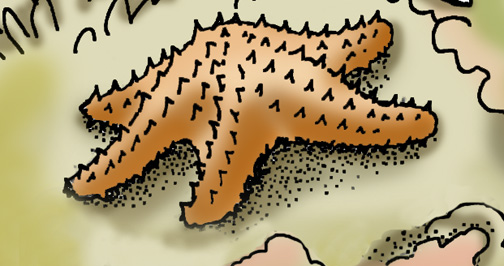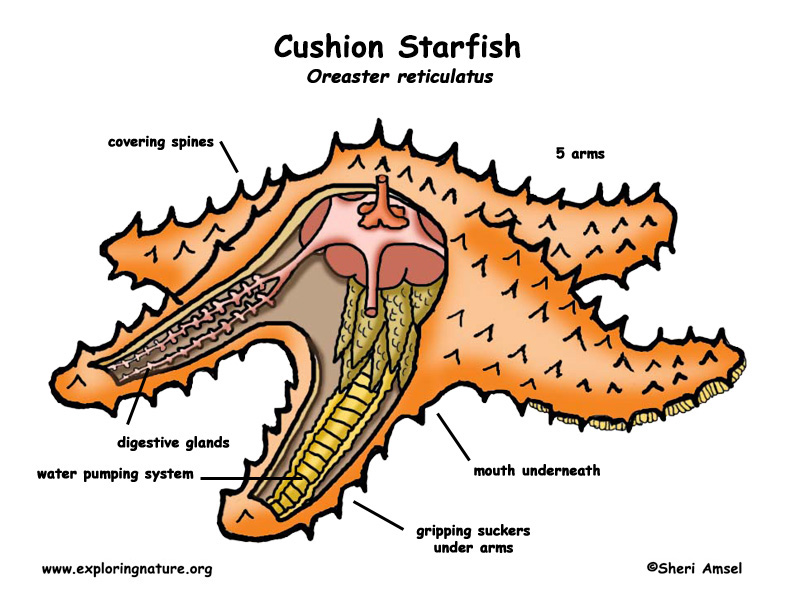

They are found in the Atlantic from South Carolina to Florida.
They live on the sandy bottoms of oceans and on coral reefs and rocks.
They have a yellowish-orange hard, thick-body with spines. They have short legs with tiny suction cups underneath. They can grow to 10 inches wide. Their mouth is on their underside.
They can grow back when injured (regenerate). A complete new animal can grow from a small fragment such as an arm. The only animal that preys on cushion starfish, besides for man, is the giant triton.
They eat animals (carnivores), like sponges, clams, oysters, etc. Their stomach comes out of them and wraps around their prey. Digestive juices coat their prey and start to digest it. As it goes to mush, the starfish absorbs it and then sucks its stomach back in.
Males and females let sperm and eggs out into the water. Young sink to the ocean floor to grow up.
Kingdom: Animalia
Phylum: Echinodermata
Subphylum: Asterozoa
Class: Asteroidea
Order: Valvatida
Family: Oreasteridae
Genus: Oreaster
Species: O.reticulatus
When you research information you must cite the reference. Citing for websites is different from citing from books, magazines and periodicals. The style of citing shown here is from the MLA Style Citations (Modern Language Association).
When citing a WEBSITE the general format is as follows.
Author Last Name, First Name(s). "Title: Subtitle of Part of Web Page, if appropriate." Title: Subtitle: Section of Page if appropriate. Sponsoring/Publishing Agency, If Given. Additional significant descriptive information. Date of Electronic Publication or other Date, such as Last Updated. Day Month Year of access < URL >.
Amsel, Sheri. "Starfish (Cushion)" Exploring Nature Educational Resource ©2005-2024. December 13, 2024
< http://www.exploringnature.org/db/view/Starfish-Cushion >

